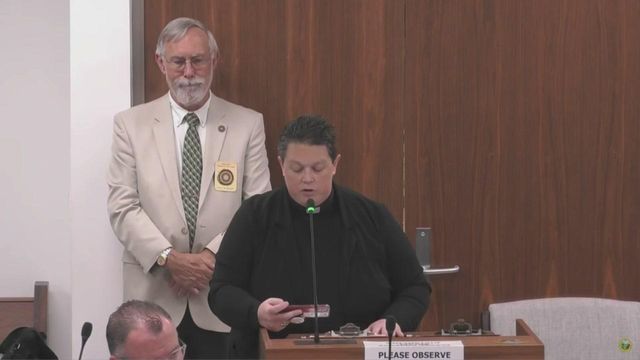5 On Your Side: New headlights could end nighttime blinding, but haven't hit US roads yet
You’ve probably been blinded at some point by another car’s headlights that are too bright. It’s not something the other driver is doing intentionally, but newer LED lights are way brighter than old halogen bulbs and if you cross paths at the wrong angle, it can be hard to see anything in front of you.
Adaptive Driving Beam headlights are designed to fix this problem by significantly reducing glare for other vehicles on the road. They’ve been used in Europe since 2012 and they’ve been allowed in the US since 2022, but they’re not active on any American roads. Why?
The short answer: no one can meet NHTSA standards.
How ADB works
“It’s more like one of those IMAX projectors where it can actually project light anywhere you want to in front of you and to your side,” explained Mark Smith with Wake Tech’s Automotive Center. “Computer controlled, it can recognize there’s a deer, or a person, or a motorcycle, or a bicycle on the side and either light it up, or there’s a car coming and not light that at all.”
Using an array of LED lights, Adaptive Driving Beam headlights can essentially cast a shadow on oncoming cars or cars driving ahead of you in your same direction. It can do that while still lighting up the rest of the road and off to the side as brightly as high beams.
There are cars sold in the US that are equipped with the European version of ADB.
“The technology is in the car already, it’s just not activated,” Smith told 5 On Your Side.
That’s because the performance requirements established by NHTSA in 2022 are different and stricter than the European standards.
“All the manufacturers are saying wait a minute, we’ve already got this stuff in other parts of the world. Can’t you be as stringent, not more?” Smith said.
What’s Different
According to NHTSA’s final rule on ADB headlights, approval in Europe includes a road test and the performance of the ADB system is evaluated based on the subjective observations of an engineer during the test drive.
NHTSA goes on to explain in the final rule “The ECE road test is therefore not appropriate for adoption as a Federal Motor Vehicle Safety Standard because it does not provide objective performance criteria. However, the proposed track test scenarios were based, in part, on the ECE road-test scenarios.”
But as soon as objective performance standards were set by NHTSA, there was concern. A group called the Alliance for Automotive Innovation was one of several who filed a petition for reconsideration.
One of AAI’s concerns was that some of the standards conflicted with each other, essentially making a compliant ADB system practically impossible.
When we asked them about their concerns, AAI sent this statement to 5 On Your Side: “Headlight technology is a core vehicle safety feature that continues to improve nighttime visibility – helping save lives and avoid collisions. Automakers developed adaptive driving beams (ADBs) to advance driving safety without interfering with the visibility of other drivers. That’s why we’ve urged NHTSA to strike a balance that permits wider and faster adoption of ADBs and advanced safety headlight systems on America’s roads.”
5 On Your Side asked NHTSA if they are making any changes to their rules. They replied: “The petitions for reconsideration of the adaptive driving beam final rule are currently under review.”
The cost and the benefit
Mark Smith at Wake Tech sees another problem: the price. Not for car buyers, but for shops.
“The kind of tester that we have, and every other shop has, that certify that your headlights are ok in an inspection, [would have to be] completely replaced,” Smith explained.
That cost of tens-of-thousands of dollars for a new tester could be prohibitive for smaller shops.
There are a lot of hurdles to getting ADB headlights on our roads by our rules, but if we just took the existing European version and allowed it here, would that mean we are more safe driving at night?
“Absolutely,” Smith said without hesitation. “Not only could it save lives, but it could eliminate all that annoying stuff, especially on rural roads.”
In the meantime, Consumer Reports advises drivers to look down at the right lane line when confronted with overly bright headlights. That helps reduce glare without taking your eyes off the road.
You’ve probably been blinded at some point by another car’s headlights that are too bright. It’s not something the other driver is doing intentionally, but newer LED lights are way brighter than old halogen bulbs and if you cross paths at the wrong angle, it can be hard to see anything in front of you.
Adaptive Driving Beam headlights are designed to fix this problem by significantly reducing glare for other vehicles on the road. They’ve been used in Europe since 2012 and they’ve been allowed in the US since 2022, but they’re not active on any American roads. Why?
The short answer: no one can meet NHTSA standards.








